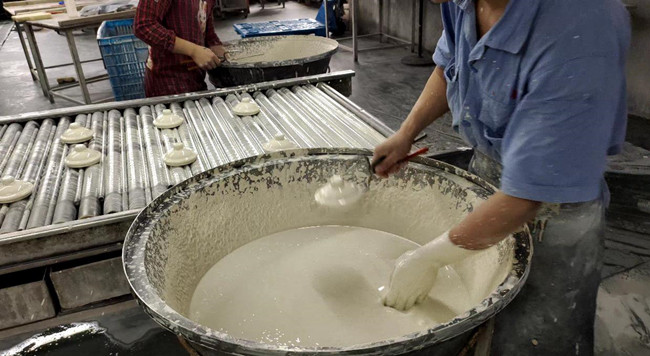What Should Be Cared About When Enameling
The operation of coating enamel slurry or enamel powder on the pre-treated metal body is called enameling. The coating method is mainly selected according to the metal type, shape, volume and quality of the blank. It can be divided into two categories: wet enameling and dry enameling. According to the operation method, it can be divided into manual coating, mechanical coating, electrostatic coating and electrophoretic coating.

Dip enameling and spray enameling are common methods for wet enameling; dusting and electrostatic enameling are common methods for dry enameling. Products with smaller volume and lighter weight are suitable for dipping and enameling; products with larger volume and complicated shapes (mainly referring to clear edges and corners, curved patterns), especially products that only require single-sided enamel or multi-color colors Decoration is suitable for spray enameling; cast iron sanitary wares with simple shapes but higher quality are suitable for powder coating; flat products with simple shapes or higher surface prices are suitable for electrostatic enameling; particularly dense porcelain surfaces are required , Electronic accessories products that can withstand high voltage are suitable for electrophoretic coating.
A reasonable enameling process should make the thickness of the porcelain surface appropriate and cover it as evenly as possible. The thickness and uniformity of the enamel are not only directly related to the various physical and chemical properties of the product, but also the color difference of the enamel product due to the difference in the thickness of the enamel layer, which affects the appearance quality of the product.
The enameling method of coating the enamel slurry on the metal body is called wet enameling. There are three basic methods: dip enamel, spray enamel and flow enamel.
Dip enameling is the most primitive and simplest enameling method in wet enameling. Dip enamel is suitable for the enamel of single-color products. If the workpiece is small and the shape is simple, the metal blank is immersed in the enamel enamel slurry, all parts of the enamel slurry are absorbed and then lifted out, and the excess enamel slurry can be removed. If the work piece is complex, the work piece needs to be immersed in the enamel slurry and rotated, and then the excess enamel slurry is removed by various methods such as throwing, turning, hooking, etc., so as to obtain a uniform enamel slurry coating.
The relative density of the enamel slurry used for enameling of the second enamel and second firing product is generally controlled at 1.62~1.70, and the thickness of the porcelain layer after a single enameling and firing is 75~125μm. Products that only need a black ground coat to be fired at one time due to the requirements of the thickness and uniformity of the porcelain layer, so we must pay more attention to the principle of "thick powder and thin enamel" (in many places, the relative density and consistency of the enamel slurry is often referred to as " Thick"), that is, the relative density of the enamel slurry can be increased to 1.75~1.80. The relative density and retention performance of the enamel slurry are very important to the thickness and uniformity of the porcelain layer, and need to be measured frequently. When the retention performance is too low, a retention agent should be used to make proper adjustments.
For the parameters of the enamel slurry used in traditional manual dipping, there are many specific parameter data in the previous literature. Due to the introduction of new suspending agents, changes in enamel glaze formulations and the emergence of new products, those data are not necessarily suitable for the current reality. Production, but some basic principles are the same:
1. The relative density and retention performance of the enamel slurry are relatively higher for small, complex-structured workpieces. The coating quality of such workpieces is more dependent on the operation level of the enameling workers.
2. For products with large-scale coating and relatively simple structure, the relative density and retention performance of the enamel slurry should be lower. In the production of this kind of workpieces, special personnel can be used to soak the enamel, shake the bottom, etc., and then have another operator to complete the rest of the assistance action. In this way, the details of the enameling action can be operated by a dedicated person to make the quality of the enamel higher and more stable, and it can also avoid excessive physical exertion by one person to complete the entire operation process.
3. For products that are painted and fired many times, the thickness of the enamel ground coat should be reduced as much as possible to reduce various defects in the subsequent processes. Especially for products that need to be decorated with flowers, the problem of the ground coat is mostly manifested when the flowers are burnt.
The tools and equipment used in traditional dip enameling are very simple, mainly including enamel slurry tanks, enamel tongs, drying racks, products that require special processing of the edges, and special tools, such as edge rubber, piping boxes, boards, etc., most of these It is a non-standard tool made by the manufacturer.